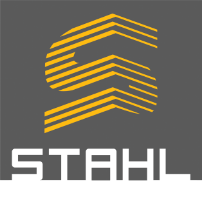A heady subject, I know, but have you ever wondered if you are predominantly right-brain or left-brain? Or, how being dominant in one of the hemispheres may shape how you see the world and respond to it?

Let’s explore this
theory for a moment. You can take this ten-minute test here:
http:/testyourself.psychtests.com/testid/3178
It is enriching to learn about ourselves, and to learn about the ways that our individual wiring can affect our abilities to do some tasks more effectively than others.
In the early years of my professional practice, I augmented my income by teaching at two of the colleges in our region which offered coursework in Interior Design. Before I had ever really considered this theory of right-brain and left-brain activity, I was able to witness the manifestation of this notion by observing my students. The students were bright, energetic, and highly creative (predominantly right brain). They arrived at class eager to apply new creative skills that would shape them into professional designers. Well, let’s say they arrived at class eager on most days. In every creative class, they demonstrated enthusiasm and excitement. However, in classes that required a high degree of technical skills, they were not so eager.

And what is more, they were often extremely frustrated with their abilities to learn technical skills. You see, design work (creativity) is a right-brain activity and technology engages logic (left-brain activity). The process of learning how to be a modern-day design professional and grasp left-brain technical skills is a challenging one for most if not all first-year design students.
What does all of this have to do with your renovation project? Designing spaces for today’s healthcare environments requires a careful balance of both right-brain and left-brain abilities and here is why: It is not enough to produce a space that is aesthetically pleasing (creative), it is also about having the ability to be organized (logic), meet budgets (logic), understand life-cycle costs (logic), understand return on investment (logic), be capable of doing research and applying various codes (logic), and possessing the skills to use technical software (logic) that clearly communicate design intent to your stakeholders, building officials and your contractor.

Let’s face it, most of you who are in executive leadership roles possess incredible skills in the logic category. Fantastic! We need you. You oversee a large organization, manage ginormous budgets, and engage in the day-to-day schedules and operational needs of your facility (all left-brain activities which you excel in). Although you may enjoy the results of environmental improvements within your facility, rarely do you enjoy the process. When you do engage in spontaneous right-brain activities (like buying a Harley Davidson, jumping out of an airplane, or making improvements to your facility without agency approval), remember that some of these choices can have dire consequences. You may get lucky and only sustain a nasty muffler burn or find yourself with a broken ankle asking yourself why you jumped out of a perfectly good airplane or, you may end up with some hefty OSHPD fines/citations.
Remember, it costs you more to do it twice, so conducting projects “under the radar” is illogical for an intelligent left-brain individual. This is spontaneous, risk-taking behavior (not giving thought to long term consequences), and this careless use of right-brain stimulus is what often gets designers in trouble too. So, we have something in common.

Designers who think something “looks cool” but their design cannot be built, or it does not meet functional or code requirements, quickly lose face among their peers and are regarded as being less than professional. Whether we are facility executives or design professionals, we do not put our best foot forward when we take senseless risks.
With all of that said, I think that it is important to know that OSHPD is not always the big bad ogre that you may think it is and that there are some specialized programs within OSHPD that may help you to achieve your goals, before you end up in hot water.
If you are ready to explore your options remember that TSC was founded on Walter Stahl’s experience and expertise as Chief Compliance Officer for OSHPD (he knows this stuff like the back of his hand), and that a phone call will cost you nothing.

That’s right, $0.00. Yes, this is also another left-brain activity because logically, you have nothing to lose. I mean no disrespect when I say that you have so little to lose that I am not sure if I would call this left-brain, or a “no-brainer.” It’s that easy.
In your situation, we understand that you are often overwhelmed and do not know where to begin. The physical needs for your facility outweigh the time and/or resources that you have available. This is where having a Master Plan developed for your facility improvements is beneficial. This tool will help you to see and communicate the long-range goals for your facility in a way that identifies space, functional needs, phasing, and budget requirements. The improvements happen systematically as your budget allows and all work toward a cohesive whole.
In summary, I think that the quote which appears on the website for the test (see link above) says it best. “There is a foolish corner in the brain of the wisest man”- Aristotle. It is up to us to know what our strengths and weaknesses are, and to know when we enter that risky little area in our thinking which has the potential to make us a fool.
Consider the Harley, perhaps sky-diving, but by skipping the agency/permitting process, you will learn to regret it. There is no entertainment value in this, only trouble ahead.
Stay tuned for more information on right-brain, left-brain activities as it relates to your facility and to Evidence-Based Design for healthcare environments. This practice involves right-brain activities on many levels including the creation of new ideas and theories that can be measured in a reliable and logical method (left-brain) and can be applied to the design of your facility to produce improved healthcare outcomes. I consider it intelligent design.
As Corbusier beautifully stated, “Design is intelligence made visible.”
Let us show you how smart you can look.
For a little right-brain left-brain humor, enjoy this video from Jeanne Robertson.



